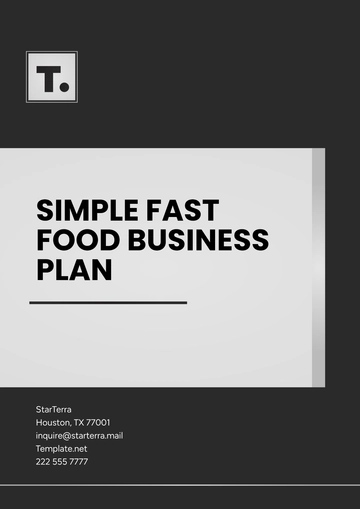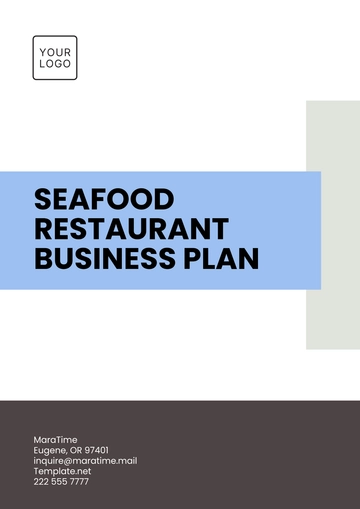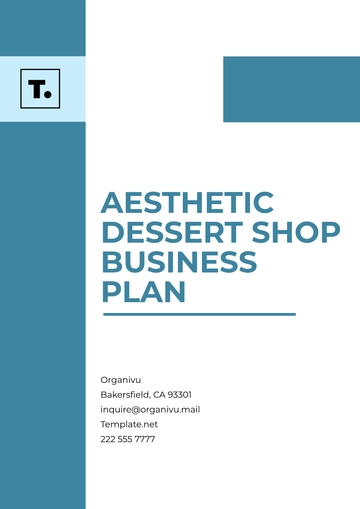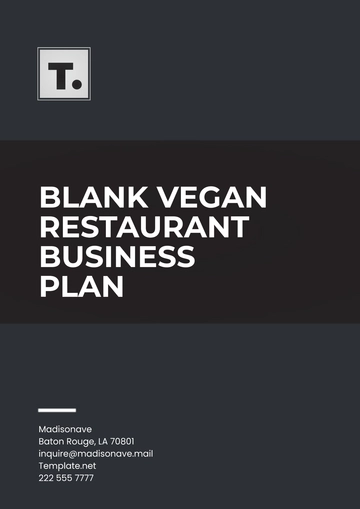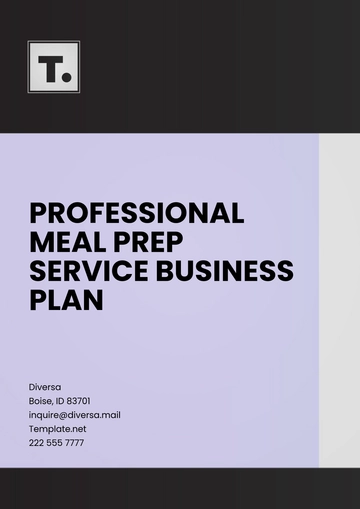Free Food Business Plan

I. Introduction
This business plan proposes the launch of [Your Company Name], a restaurant dedicated to offering high-quality, innovative cuisine. Our mission is to provide a unique dining experience that combines exceptional food with outstanding service. We aim to become a sought-after destination within the next three years by focusing on culinary excellence and customer satisfaction.
1.1 Company Description
[Your Company Name] will offer a diverse menu featuring gourmet dishes crafted from fresh, locally sourced ingredients. Our restaurant will create a welcoming and upscale dining environment.
1.2 Mission Statement
Our mission is to delight our customers with a memorable dining experience through innovative cuisine, excellent service, and a commitment to quality.
1.3 Company Goals and Objectives
To achieve a customer satisfaction rating of 95% or higher within the first year.
To achieve profitability within the first 18 months of operation.
To establish a strong brand presence in the local community and beyond.
1.4 Business Philosophy
We believe in quality, creativity, and customer-centricity. Our philosophy is to deliver an exceptional dining experience through meticulous attention to detail and a commitment to culinary excellence.
1.5 Company Background
[Your Company Name] is founded by a team of seasoned professionals with extensive experience in the culinary arts and restaurant management. Our founders have backgrounds in fine dining, food innovation, and business management.
II. Market Analysis
2.1 Industry Description and Outlook
The restaurant industry is experiencing steady growth, with increasing demand for unique dining experiences and high-quality food. The trend towards gourmet and artisanal food offerings presents an opportunity for [Your Company Name] to capture a niche market.
2.2 Target Market
Our target market includes food enthusiasts, professionals, and families seeking high-quality dining experiences. We will cater to individuals and groups looking for gourmet meals and an upscale atmosphere.
2.3 Market Needs
There is a growing demand for innovative and high-quality dining options that offer both exceptional food and a memorable experience. [Your Company Name] aims to address these needs with a distinctive menu and superior service.
2.4 Market Trends
Current trends in the restaurant industry include a focus on sustainability, local sourcing, and experiential dining. [Your Company Name] will incorporate these trends to appeal to modern consumers.
2.5 Competitive Analysis
Competitor | Strengths | Weaknesses |
|---|---|---|
The Bistro | Established reputation, diverse menu | Higher prices, less focus on innovation |
Chef’s Table | High-quality ingredients, excellent service | Limited seating, high price point |
III. Organization and Management
3.1 Management Team
[Your Name], Owner/Manager: Over 15 years of experience in restaurant management and culinary arts.
Sarah Lee, Head Chef: Renowned for innovative cooking and expertise in gourmet cuisine.
Michael Brown, Marketing Director: Extensive experience in restaurant marketing and brand development.
3.2 Organizational Structure
[Your Company Name] will be structured into key departments including Culinary, Service, Marketing, and Operations. Each department will be led by experienced professionals to ensure smooth and efficient operations.
IV. Products and Services
4.1 Menu
Appetizers: Truffle Risotto Balls, Tuna Tartare
Main Courses: Filet Mignon, Pan-Seared Scallops
Desserts: Chocolate Fondant, Vanilla Bean Crème Brûlée
4.2 Additional Services
Catering for special events
Private dining options
Cooking classes and demonstrations
4.3 Suppliers and Sourcing
We will source ingredients from local farmers and trusted suppliers to ensure freshness and quality. Our commitment to sustainability includes using eco-friendly packaging and reducing waste.
V. Marketing and Sales Strategy
5.1 Market Strategy
Our marketing strategy will include a combination of digital advertising, social media engagement, and local partnerships. We will also utilize influencer collaborations and community events to build brand awareness.
5.2 Sales Strategy
We will focus on both dine-in and takeout services, with an emphasis on creating a memorable in-restaurant experience. Our sales strategy includes loyalty programs and special promotions to attract and retain customers.
5.3 Customer Acquisition Strategy
We will implement targeted marketing campaigns, offer introductory discounts, and leverage customer referrals to build our customer base.
5.4 Sales Forecast
Year | Sales Revenue |
|---|---|
Year 1 | $750,000 |
Year 2 | $1,200,000 |
Year 3 | $1,500,000 |
VI. Financial Plan
6.1 Startup Costs
Item | Cost |
|---|---|
Renovations and Equipment | $200,000 |
Initial Inventory | $50,000 |
Marketing and Advertising | $30,000 |
Legal and Professional Fees | $20,000 |
Working Capital | $50,000 |
6.2 Financial Projections
Year | Revenue | Expenses | Profit |
|---|---|---|---|
Year 1 | $750,000 | $650,000 | $100,000 |
Year 2 | $1,200,000 | $900,000 | $300,000 |
Year 3 | $1,500,000 | $1,100,000 | $400,000 |
6.3 Break-Even Analysis
[Your Company Name] is projected to break even within the first 15 months of operation, based on our current revenue and expense projections.
VII. Appendix
7.1 Resumes of Management Team
Attached are detailed resumes of our management team, showcasing their experience, expertise, and qualifications.
7.2 Market Research Data
Comprehensive market research data including industry analysis, target market demographics, and competitor analysis are provided to support our market analysis section.
7.3 Key Contracts and Agreements
Copies of key contracts with suppliers, lease agreements, and partnership agreements are included to demonstrate our established business relationships.
- 100% Customizable, free editor
- Access 1 Million+ Templates, photo’s & graphics
- Download or share as a template
- Click and replace photos, graphics, text, backgrounds
- Resize, crop, AI write & more
- Access advanced editor
Cook up a winning strategy with Template.net’s Food Business Plan Template. This fully editable template is designed for the food industry, covering every aspect of your business, from concept to execution. Use our AI Editor Tool to tailor the content to your culinary vision and business goals, ensuring a comprehensive, and appetizing plan for success.
You may also like
- One Page Business Plan
- Coffee Shop Business Plan
- Restaurant Business Plan
- Food Business Plan
- Real Estate Business Plan
- Executive Summary Business Plan
- Cover Page Business Plan
- Nonprofit Business Plan
- Daycare Business Plan
- Construction Business Plan
- Startup Business Plan
- Medical Business Plan
- Bakery Business Plan
- Service Plan
- Hotel Business Plan
- Catering Business Plan
- School Business Plan
- Healthcare Business Plan
- Transportation Plan
- Sports Plan
- Car Wash Business Plan
- Salon Business Plan
- Clothing Business Plan
- Farming Business Plan
- Boutique Plan




